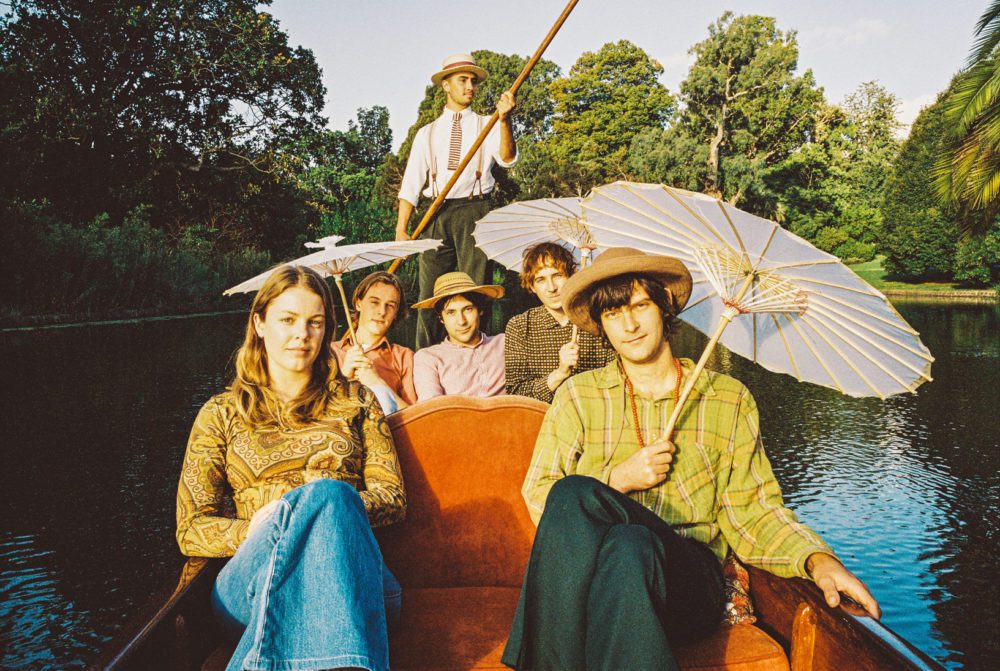

Taking shape over the course of two years, New Orleans-based singer-songwriter Esther Rose offers a different outlook to romantic losses and hardships – unique from the wallowing cries of the average love song – on her third album How Many Times, out March 26 via Father/Daughter Records/Full Time Hobby. Carefully acknowledging viewpoints from both parties, Rose’s personal anecdotes are meant to move audiences both physically and emotionally.
Rose’s sweet alt-country, folk pop twangs and two stepping rhythms originate back to her experience as a fresh New Orleans local. Roaming the noisy streets filled with traditional jazz bands, the singer-songwriter found her niche in NOLA’s own eclectic country music scene. Seeing the parties of joyful folks gathered around lively country music shindigs, Rose joined in on the fun and felt particularly at home.
Other than the two-step dance accompaniment, it was the soft weeping tones of the pedal steel guitar and frantic bowing of the fiddle that particularly piqued her interest, reminding her of a beloved legend Hank Williams. Drawn to his “lonesome voice and three-chord [compositions] on the guitar” Rose felt personally connected to not only these foot-tapping rhythms, but also the warmth and intimacy of songwriting itself. Album single “Songs Remain”reminisces on Williams withthe singer’s intimate vocals accompanied with the slow strums of the guitar.
How Many Times is ignited by the spark of lyrical compositions stemming from little moments in Rose’s life – an exchange of words in arguments, overheard conversations and catchphrases born out of heart-to-heart chats. Representative of significant experiences in her life, her songwriting process served as a means of introspection and self-discovery. “I would say that our experiences as humans really shape us,” she describes. “So I use songwriting to examine my life, experiences and relationships.”
Her affinity for looking outward at life’s circumstances causes her to analyze its meaning and her own perspective carefully and thoughtfully. She crafts her lyrical phrases with the intention of looking at the bigger picture, processing each moment with the proper care it deserves. “It’s a universal experience,” she describes. “Whatever it is that sets up the song is being present in the world and paying attention.” Listeners are given a peek into the intimacy of these referenced conversations in tracks like “Good Time,” where Rose sings “It’s a real good time for bad timing” with conspiratorial inflection, the sort of wink and nudge one might give a close friend during a night on the town.
The idiosyncratic outlook at relationship pain Rose expresses in her songs seems to be more than solely grieving and throwing blame or anger on the other party. Allowing herself to feel the torment of heartbreak, the musician simultaneously expresses her acceptance of the hurt she’s feeling while poking fun at her own negative reaction on “My Bad Mood.” She sings candidly, “You got your new blue jeans and the girl of your dreams/I guess I should go and do the same/Oh, I’m getting pretty tired of me and my bad mood.”
Rather than focusing on blue tones of the average love song, the musician has an interesting way of shaking up the vibes of the gloom through her change in tempo. On the album’s title track Rose keeps listeners engaged with a sudden change in time signature in the middle of the song. Soothed by the sustained wails of the fiddle in the beginning of “How Many Times,” the listener will find themselves tapping out a faster tempo by its end, concluding with a light-hearted touch. Other tracks, like “Mountaintop,” “Without You,” and “Keeps Me Running” carry on as the fast-paced instrumentation allows listeners to forget about emotional turmoil.
Rose’s says her affinity for upbeat tempos helps “iron out [her] nerves,” rather than giving into the emotions of bluesy, dismal sounds as a bandaid for hardship. How Many Times may have the same effect on fans, who can experience her music as the artist herself would, turning painful emotions into songs worthy of dancing to. “What I’m trying to do sonically as a songwriter [is to] explore emotions in a way that by the time I’m done writing it, it has changed the emotion into something that we can all dance to and have fun with,” she says.
With an ever-changing state of mind, Esther Rose is currently working on new music touching on themes of future fear, family, health, and the planet. “I’ve never played it out with my band,” she says of the new material. “So the songs feel really exploratory and kind of goth with a lot of different tangents.”
In the process of making How Many Times, Rose turned to the records of Faustina Masigot and Kiki Cavazos to soothe her emotional state of mind and feel a sense of companionship. “These records were there for me. I love how music is that companion for heartbreak,” Rose says. Understanding the importance of music in our daily lives and the profound effect it can have on others, Rose hopes How Many Times can similarly accompany listeners in times of sorrow, or on lonely nights, or long drives. She adds, “My dream is that my record will do that for other people.”
Follow Esther Rose on Facebook and Instagram for ongoing updates.


